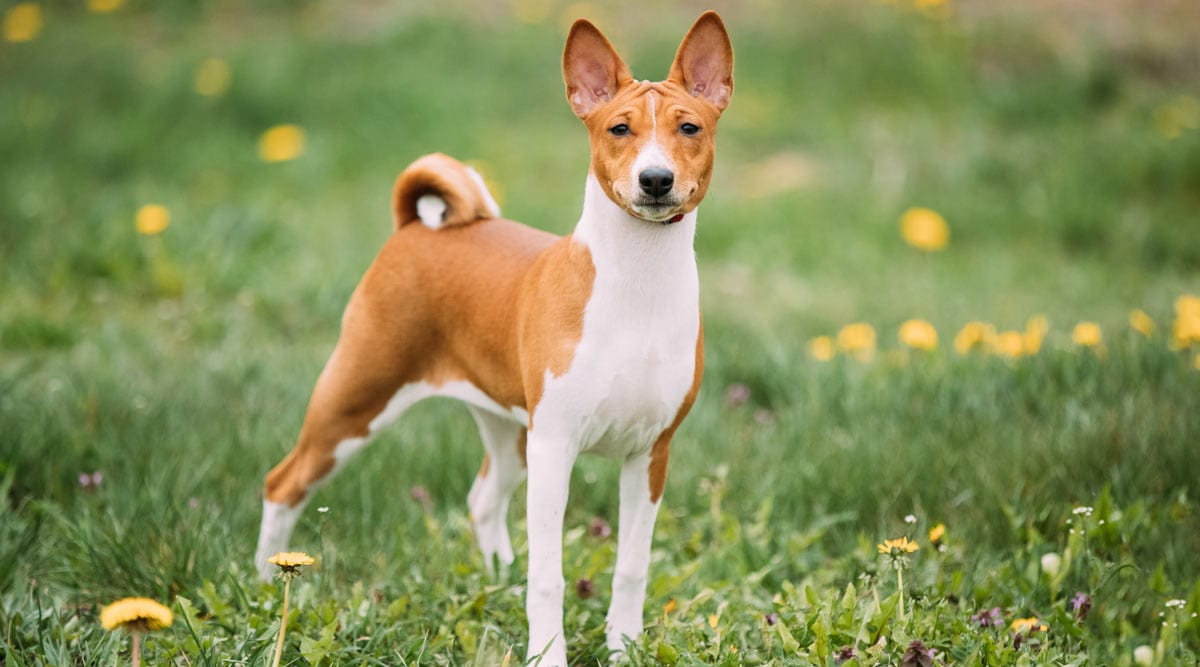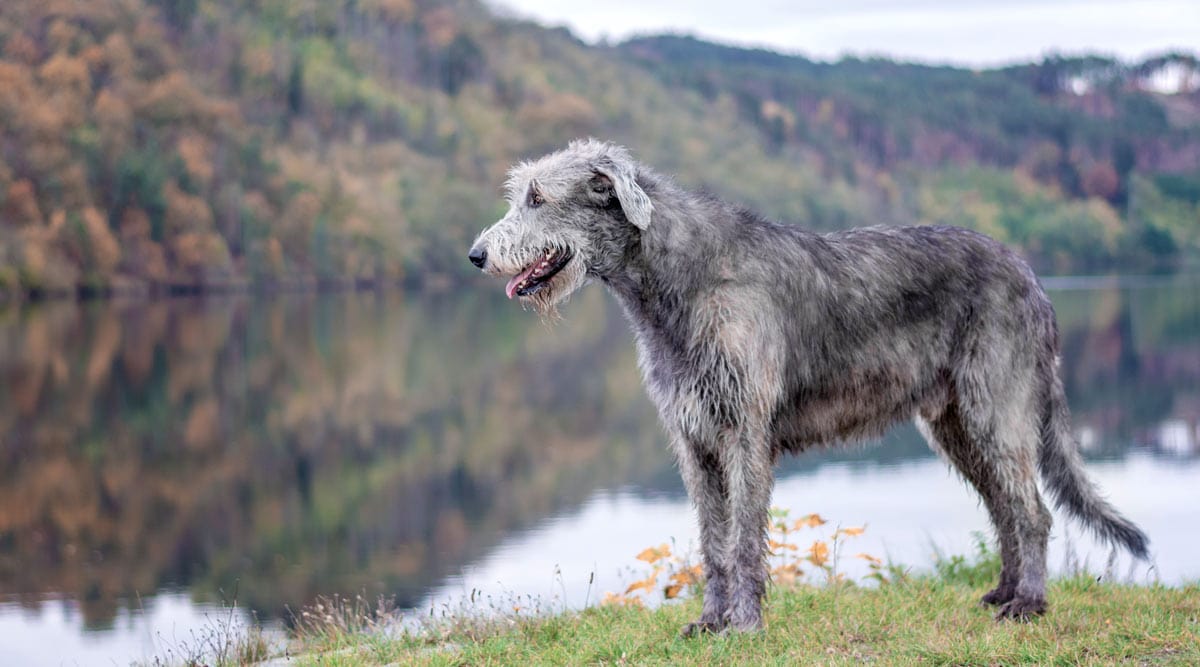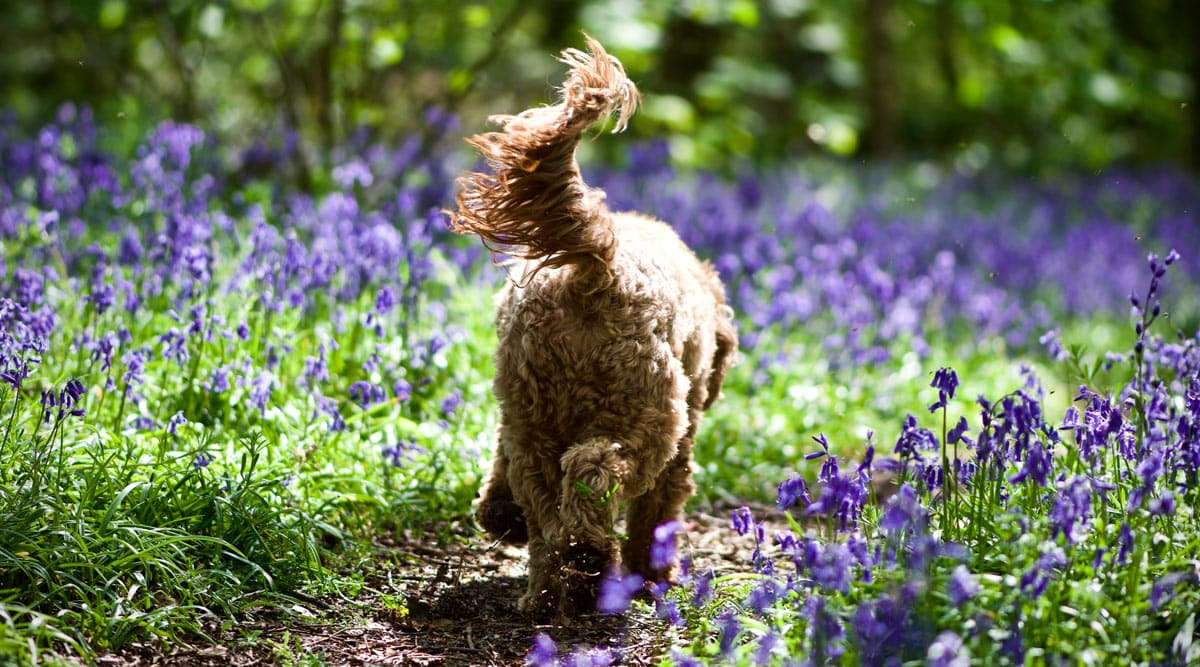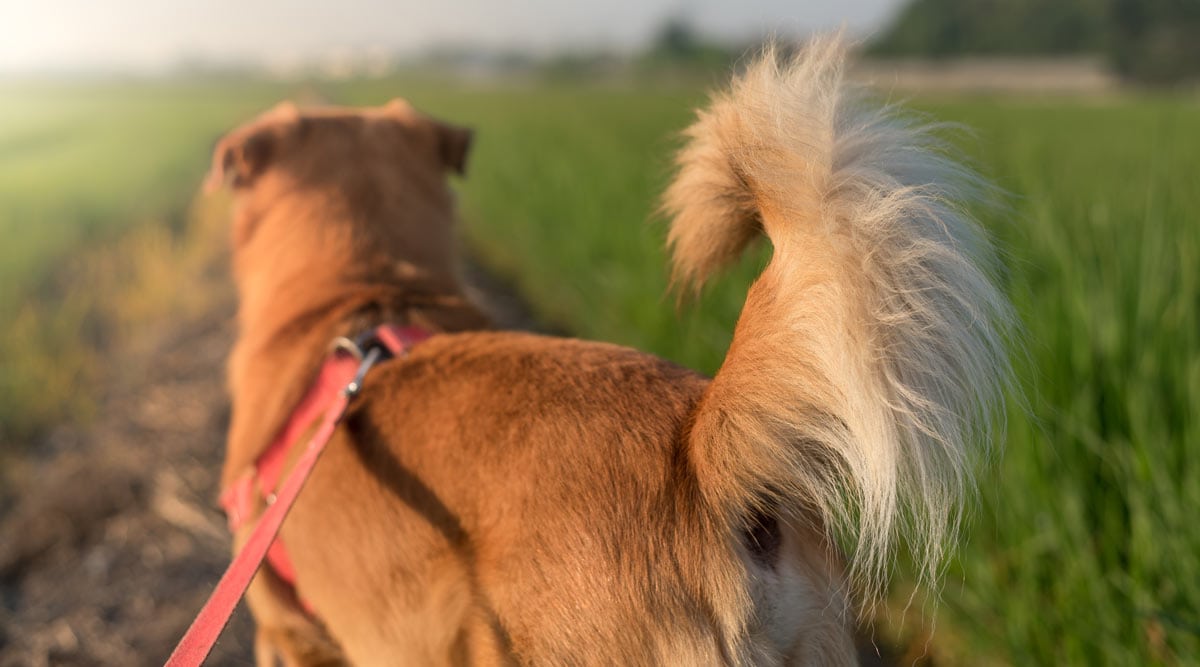Want to know which dogs have curly tails? In this article, we’ve listed 16 breeds that typically have curly tails, ranging from the tiny pug (corkscrew tail) to the huge Akita (sickle tail).
Many of these dog breeds are part of the spitz type, which is famous for having tails that curl over the back (although some spitz dogs also have drooping tails). These dogs probably originated in the Arctic regions, although the exact origin isn’t known.
Keep in mind that The Dog Clinic always recommends adopting rather than buying a dog. There are thousands of wonderful dogs out there waiting for a home! Also, you should never choose a dog breed based on their physical appearance, including tail type.
With that out of the way, let’s get to the curly tail dogs!
Contents
16 Dog Breeds With Curly Tails
Finnish Spitz
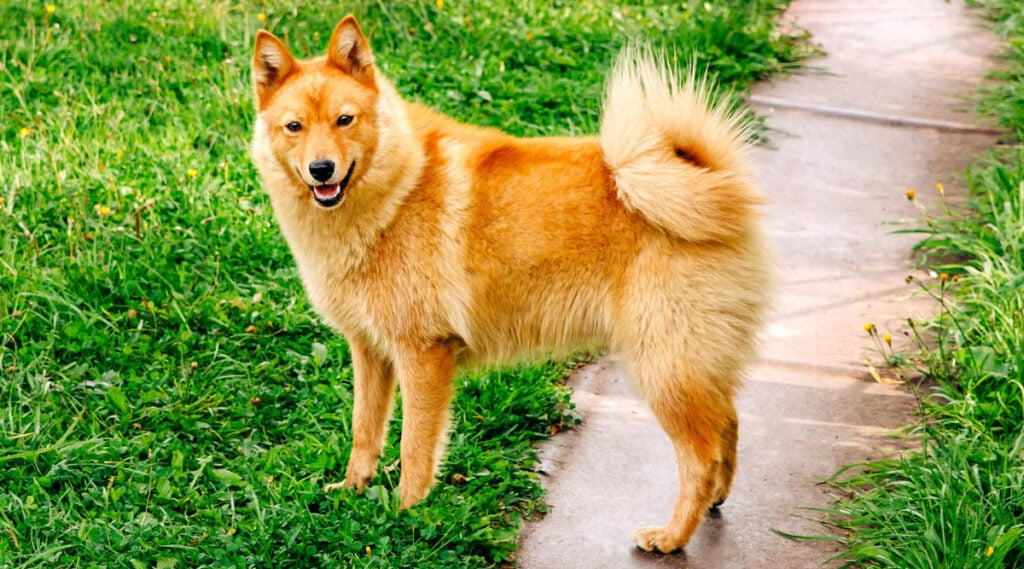
The Finnish Spitz has a fox-like face and a beautiful reddish colour. This breed has a curled, bushy tail that rests over the dog’s rear end.
As the name suggests, the Finnish Spitz comes from Finland and was originally bred as a hunting dog.
Pomeranian
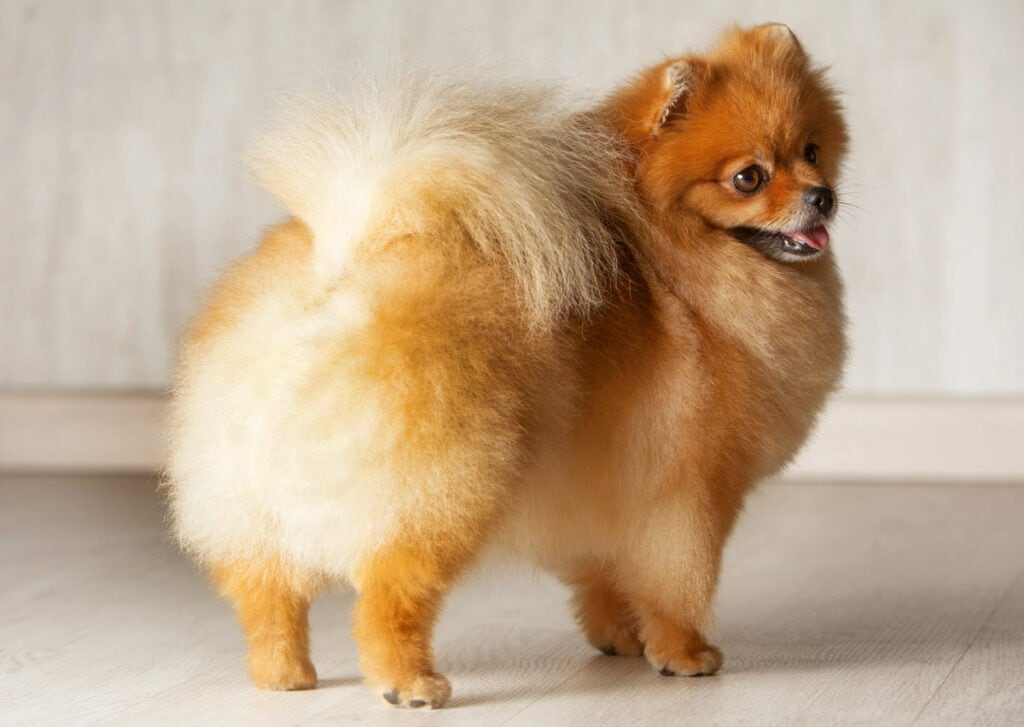
Pomeranians are tiny dogs with a wonderful double coat. This breed is another spitz-type dog and can have a range of different fur colours, along with a plumed curled tail that sits flat against the body.
In terms of their history, the Pomeranian is probably a descendant of the German spitz.
Related Article: 23 Dogs With Fluffy Tails
Alaskan Malamute
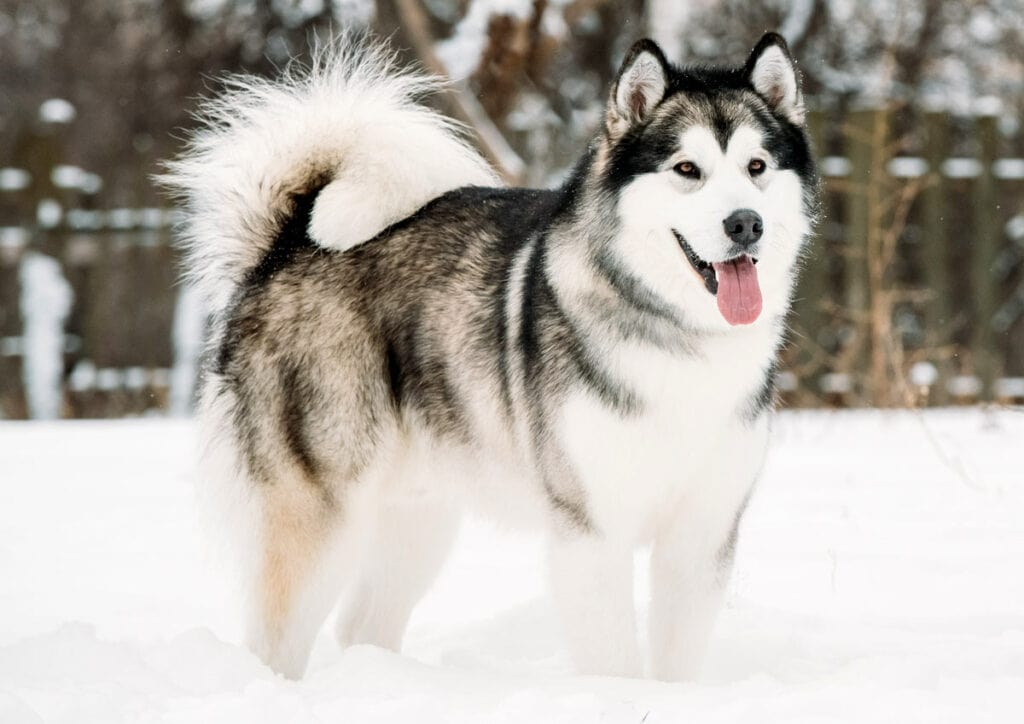
Alaskan Malamutes are a large, strong breed that is part of the spitz type. One of the breeds distinguishing characteristics is the plumed tail, which curls over its back.
Similar to the Siberian Husky in appearance, the Alaskan Malamute was bred as a sled dog. This is why it’s such a powerful and muscular breed.
Chow Chow
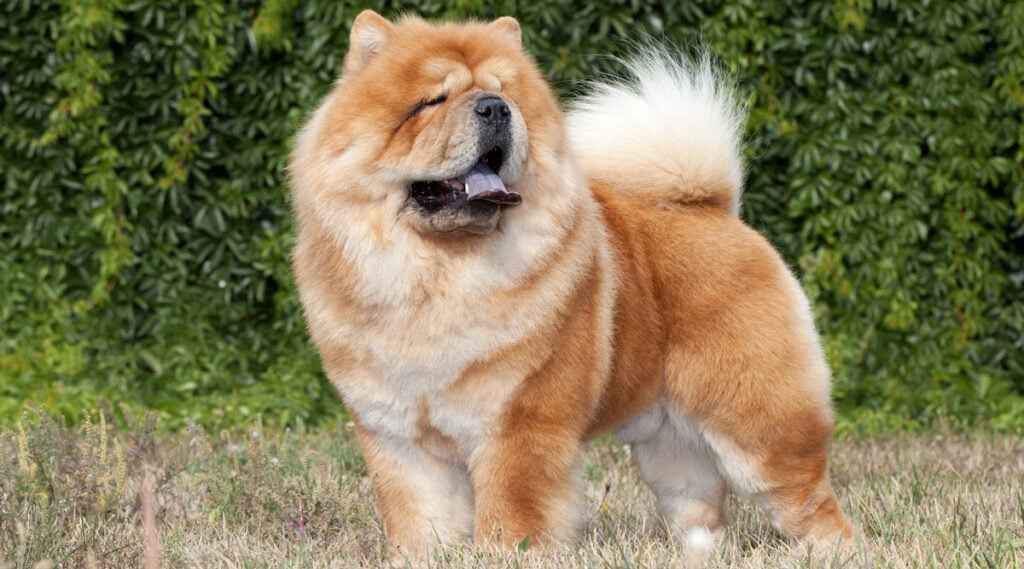
The Chow Chow is strong dog breed that originated in China. This is a powerful dog that typically has blue, black, red, cream, or cinnamon coats. It also has a curly tail with thick fur.
Interestingly, the Chow Chow is known for being almost obsessive about self-grooming and cleanliness.
Basenji
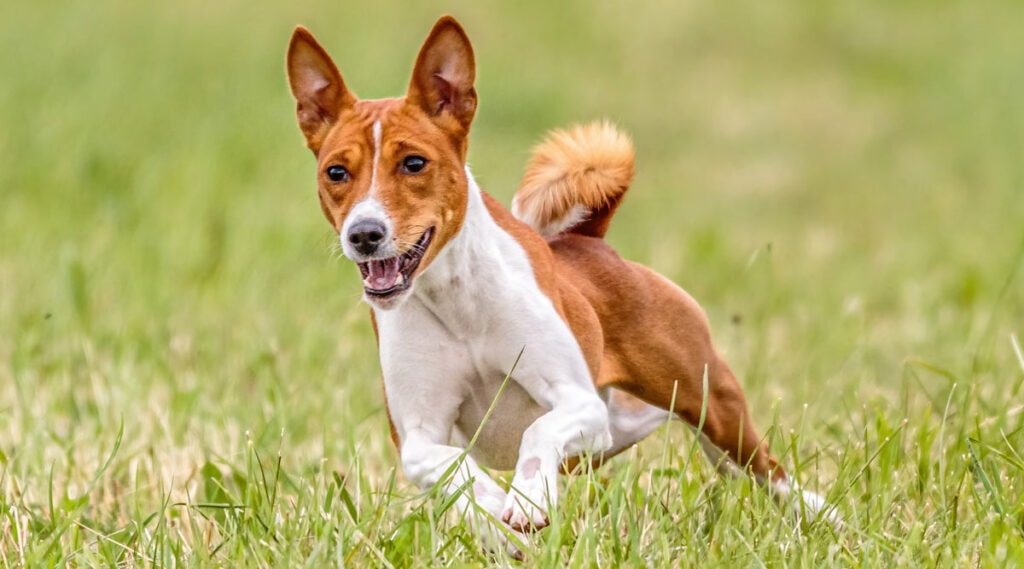
The Basenji is a small to medium-sized dog breed with a muscular appearance. It has a smooth and fine coat that comes in a variety of colours, combining white with red, black, brindle, or tricolour. The tail of a Basenji is one of its signature features, as it’s tightly curled over its back forming a neat spiral.
The breed is originally from Central Africa, where it was used for hunting. It’s often referred to as the “barkless dog” due to its unique yodels. That doesn’t mean it’s a silent breed though!
Bulldog
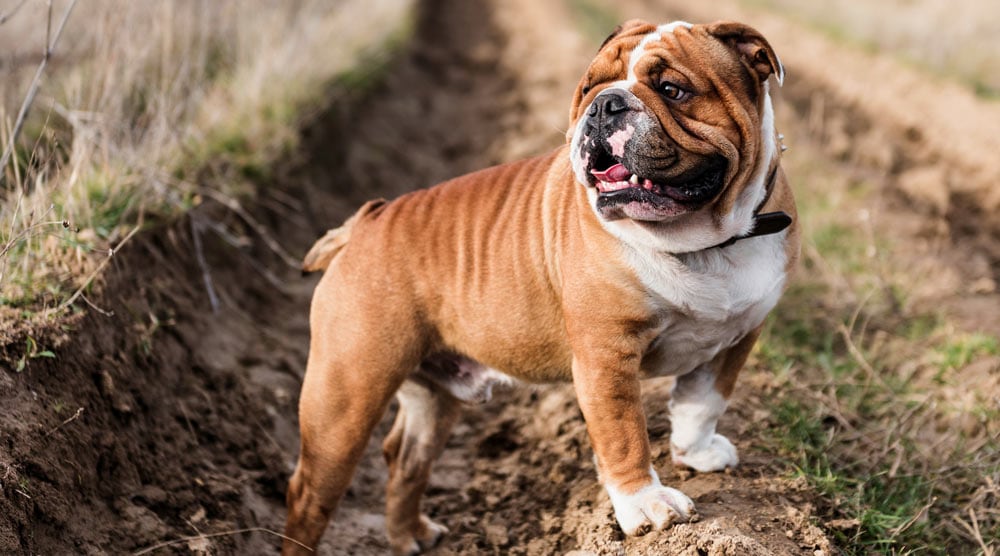
The Bulldog, also known as the English Bulldog, is a medium-sized breed known for its sturdy frame. Originally, Bulldogs were bred in the United Kingdom for bull-baiting.
This breed’s coats are smooth and short. They are various colours, including white, fawn, piebald, or any combination of these. The Bulldog has a short tail that can either be straight or corkscrewed.
Tibetan Mastiff
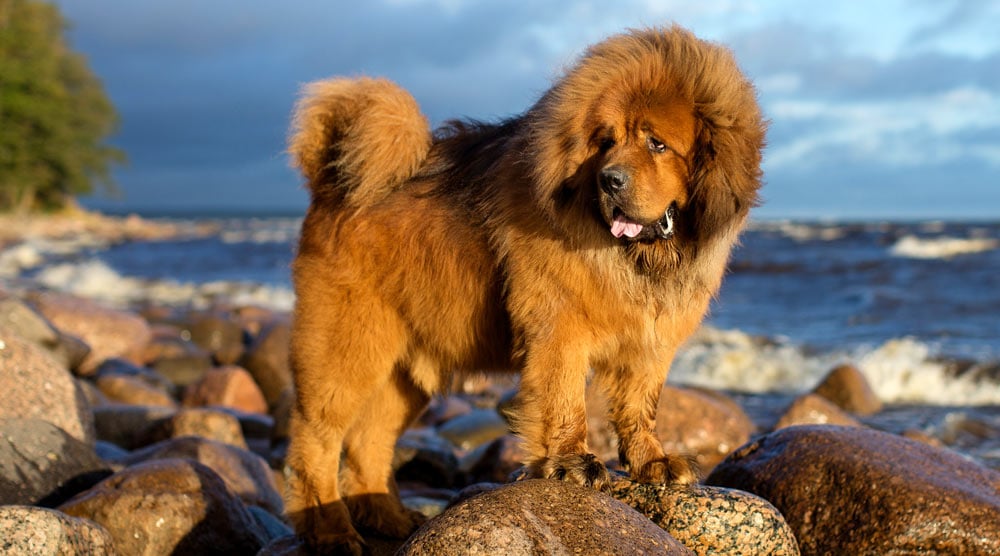
The Tibetan Mastiff is a giant breed. This breed’s dense double coat, which can be black, blue/gray, or various shades of gold, gives a lion-like appearance. Their bushy, feathered tail curls over the back when they’re alert or moving.
Tibetan Mastiffs originated in the Tibetan Plateau in Central Asia. They were traditionally used as guardians for livestock and property.
Samoyed
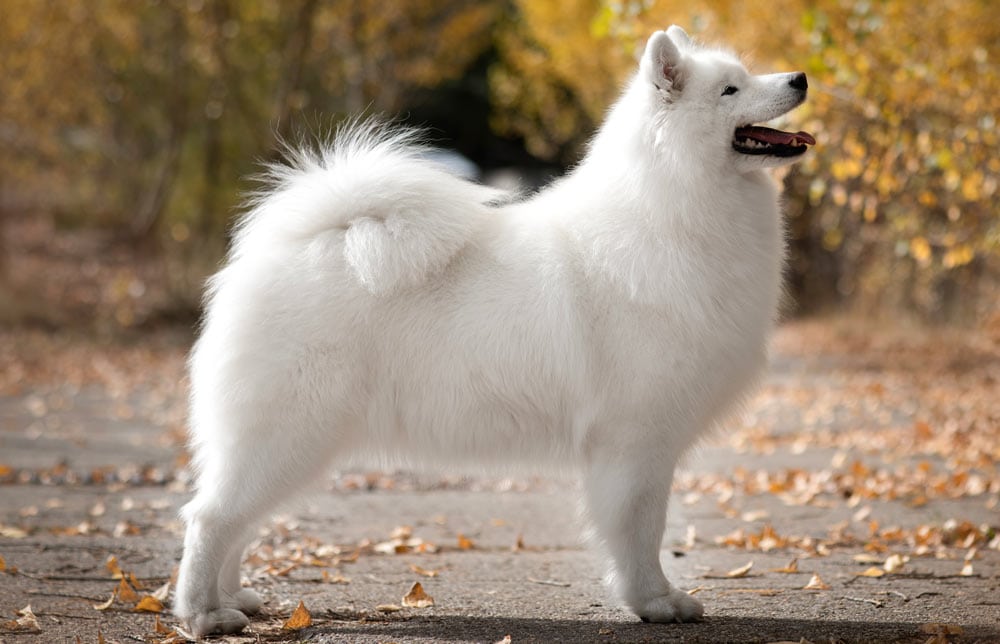
Samoyeds are muscular dogs that usually have a white and fluffy double coat, although it can sometimes be cream or biscuit. Their tail is covered with long hair and carried curled over the back.
Originally, Samoyeds were bred in Siberia to pull sleds, herd reindeer, and keep their owners warm in winter. They are known for their ‘Samoyed smile,’ due to the upturned corners of their mouths.
American Eskimo Dog
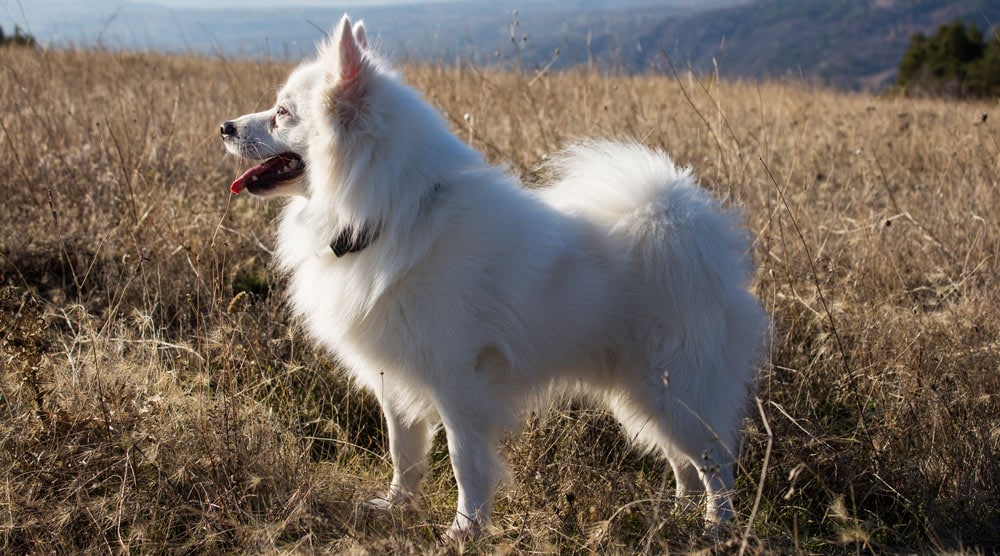
The American Eskimo Dog is a striking breed that comes in several sizes: toy, miniature, and standard. Their thick, double coat is white or white with biscuit cream. The breed’s plumed tail curls over the back, adding to their distinctive appearance.
Contrary to what the name suggests, American Eskimo Dogs actually originated in Germany. They are members of the Spitz family, which includes breeds like the Samoyed and the Siberian Husky.
Akita

Akitas are powerful dogs with a solid build. Their thick double coat can be any colour including white, brindle, or pinto. The breed’s full, bushy tail curls over the back or to one side, giving the Akita a distinctive appearance.
This breed originated in Japan and was initially used for hunting large game such as bears, boars, and deer. They are known for their loyalty and quiet nature. The story of Hachiko, a famously loyal Akita who waited for his deceased owner every day at a train station, has made this breed particularly renowned for its devotion.
German Spitz
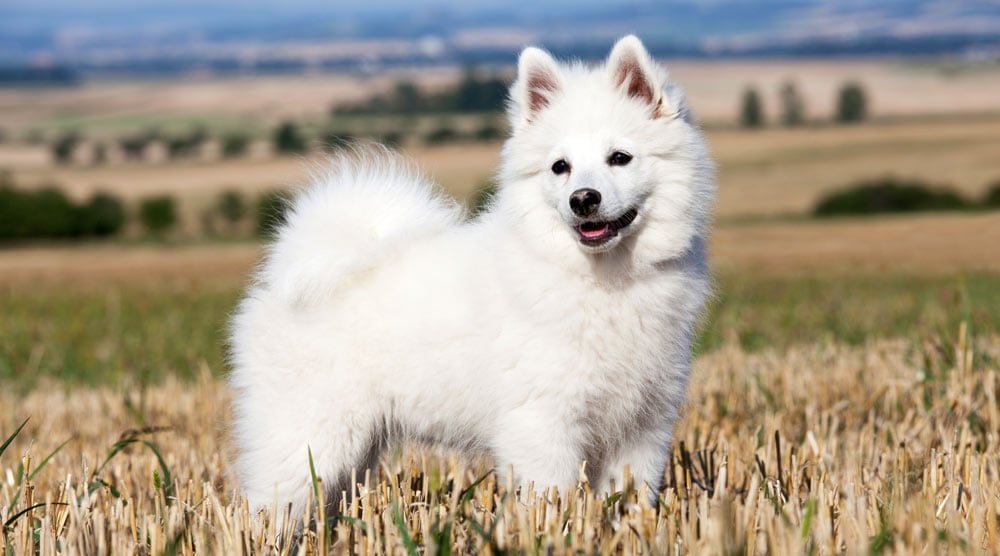
The German Spitz is a small to medium-sized breed with a fluffy double coat. This coat can come in a variety of colours, including white, black, cream, gold, black and tan, and sable. German Spitz dogs have a bushy tail that curls up over the back, adding to the fluffy appearance.
The breed originated in Germany and is one of the oldest dog breeds in Central Europe. They were traditionally used as watchdogs on farms and are renowned for their vocal nature.
Pug

Pugs are small and compact dogs. They have a smooth, glossy coat that comes in a variety of colours, though fawn and black are the most common. The Pug’s tail is curled tightly over the hip.
Pugs originated in China before becoming popular in Western Europe, especially in the Netherlands and the United Kingdom.
Shiba Inu
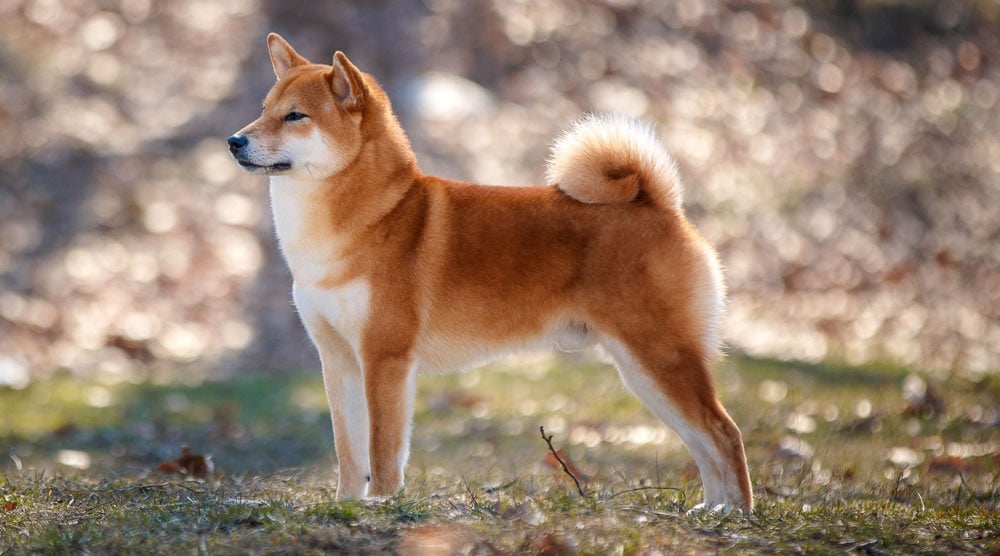
The Shiba Inu is a medium-sized breed that is muscular and compact. It has a thick double coat that can be in various shades such as red, sesame, black and tan, or cream. The Shiba Inu’s tail is thick and fluffy, curling over its back.
The breed originated in Japan and was used primarily as a hunting dog for small game. They have a unique ‘Shiba scream’ – a loud, high-pitched noise they make when unhappy or stressed.
Keeshond
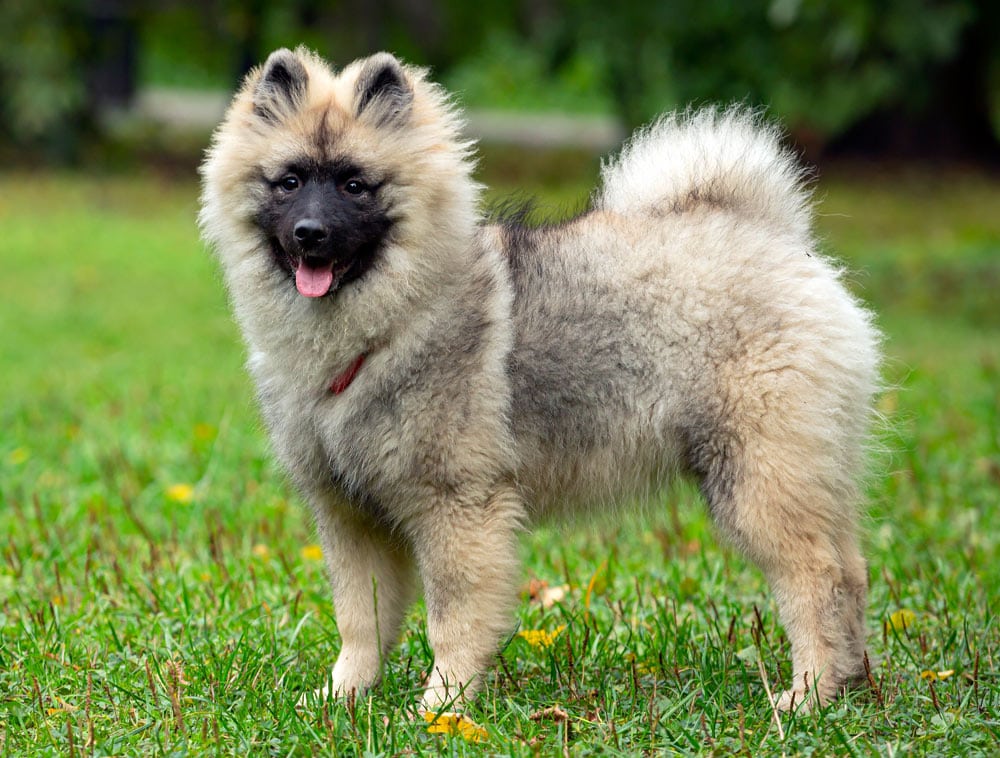
The Keeshond is a medium-sized breed with a sturdy body. Their double coat comes in shades of gray, black, and cream. The breed has a plume tail that curls over the back and lies flat. Another feature of the tail is that it’s densely covered with long, harsh hair.
The Keeshond originally hails from the Netherlands, where it was often used as a companion and watchdog on riverboats, barges, and farms.
What Causes a Curly Dog Tail?
The cause of a curly dog tail depends on the type of tail (corkscrew or sickle).
Breeds like English bulldogs and pugs often have corkscrew tails, which curl full circle back on themselves. Corkscrew tails are caused by either fused vertebrae, or wedge-shaped vertebrae that get smaller the further you go down the tail. Due to how these tails are formed, they typically stay in one position, which can make tail communication much more difficult for these breeds.
Other dogs don’t have a tail that twists back on itself, but still have a curly tail (sometimes called a “sickle tail” – see our tail type guide for more information). These tails don’t have fused vertebrae, so they can move into all the positions required to communicate via wagging.
Related Article: Why Do Dogs Have Tails?
Why You Shouldn’t Adopt a Dog Based on Their Tail Type
It might sound obvious, but you should never choose a breed to adopt based on the dog having a curly tail – or any attractive physical attribute.
Instead, it’s important to ask yourself questions such as:
- How much exercise does the breed need and can I meet these requirements every single day?
- Do I have enough spare time each day to give the dog the attention and care it deserves?
- Will I be leaving the dog alone for long periods on a daily basis? If so, then this isn’t fair on the dog, which is why many rehoming centres won’t adopt dogs to people who work full-time out of the house.
- How much grooming does the breed require? How much will this cost?
- Does this breed have any known health risks? Can I afford ongoing vet bills if the dog gets sick?
- How big will the dog get when it’s fully grown? Do I have enough space in my home and garden?
- Does the dog have a history of being suitable for a home with other dogs or cats (if applicable)? The rehoming centre should be able to tell you if this is the case.
- How often am I away on holiday or for business? Who will look after the dog?
- Do I have enough time to train the dog?
- Do I have enough spare money to pay for the dog’s food, vet bills, equipment, and training? This can be expensive for all dogs, but big dogs typically cost more. Check out our guide to the true cost of dogs if you’re not sure how much to budget.
- Am I fully committed to caring for the dog for the rest of its life?
Summary
Many dog breeds have curly tails. These range from the tight corkscrew tails found on English Bulldogs, to the flowing curled sickle tails of Alaskan Malamutes.
While curled dog tails can look beautiful, you should never choose a dog based on its appearance alone. Instead, consider the breed’s requirements, including exercise, diet, and potential health issues.
Most importantly, we always recommend adopting a dog rather than buying. There are many dogs out there waiting for a forever home, and the joy of giving a dog another chance at life can’t be beaten.
Do you have any questions about dogs with curly tails? Please let us know in the comments section below. You may also be interested in our article about dogs with long tails.
